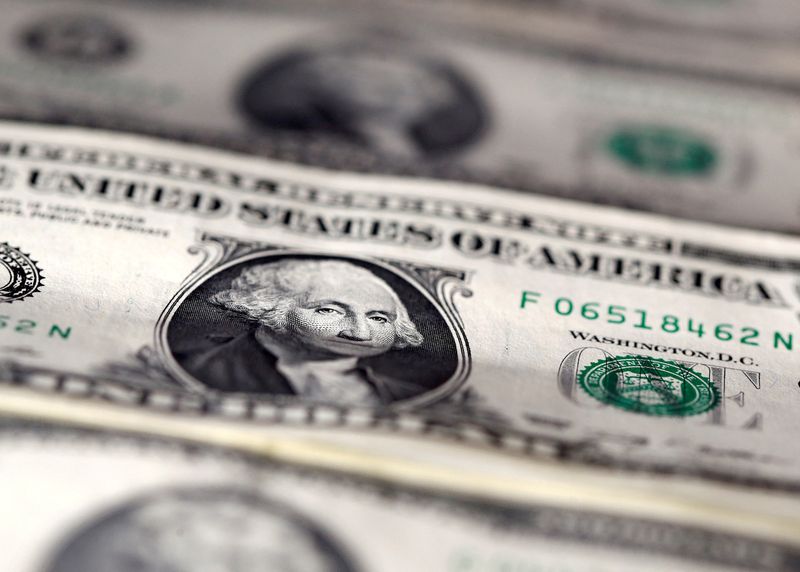By Ankur Banerjee
SINGAPORE (Reuters) -The U.S. dollar was steady on Tuesday as investors deliberated the chances of the Federal Reserve cutting interest rates next month after dovish comments from policymakers while the frail yen remained on intervention watch.

Fed Governor Christopher Waller said the job market is weak enough to warrant another quarter-point rate cut in December, though action beyond that depends on a flood of impending data delayed by the government shutdown.
Waller’s comments echoed those of New York Fed President John Williams from Friday, helping shift expectations of near-term rate cuts. Traders are now pricing in an 81% chance of a cut next month versus 42% a week earlier, CME FedWatch showed.
“There is an intense focus on the stance of each respective Fed voter and their views on a December rate cut,” said Chris Weston, head of research at Pepperstone.
“This makes sense given that the market (and the Fed) have not received the data that would typically influence their decision on policy… perhaps the biggest unknown is the view of (Fed Chair Jerome) Powell himself, but on balance one could assume he would vote for a December rate cut.”
The sudden shift in rate cut wagers has weighed slightly on the dollar. The euro last bought $1.1522 after eking out small gains overnight while sterling was at $1.3103. The dollar index, a measure of the U.S. currency against major rivals, was at 100.2 in early trading.
Fed officials though remain divided on the next steps with the central bank still lacking the full suite of data as government statistical agencies dig through the backlog of work from the 43-day shutdown that ended November 14.
“Holding rates steady in December at a time when the labour market is fragile and both short- and long-term U.S. inflation expectations are falling would be a disconnect that likely wouldn’t sit well with the market,” said Pepperstone’s Weston.
Investor sentiment was also lifted by signs of thawing U.S.- China relations. President Donald Trump touted relations with China as “extremely strong” on Monday following a call with his Chinese counterpart Xi Jinping.
The call, not previously flagged by either country, came weeks after the two leaders met in South Korea, where they agreed to a framework for a trade deal that has yet to be finalised.
YEN VIGIL
Despite the dollar’s slight weakness this week, the Japanese yen has been on the defensive, trading at 156.95 per dollar in early Asian hours, not far from the 10-month low of 157.90 it touched last week.
Traders have been waiting for signs of Tokyo officials stepping in to support the Japanese currency, which has weakened by 10 yen since the start of October as fiscal dove Sanae Takaichi took over as Japan’s prime minister.
With verbal jawboning from officials failing to stem yen weakness, market analysts believe official intervention similar to last year and in 2022 could be on the cards. Traders see intervention looming somewhere between 158 and 162 yen per dollar, but do not expect the move to be highly effective.
“We do not think that we are too far away from the levels that would warrant direct FX intervention, the 160 level versus the dollar could prove to be a line in the sand for Japanese authorities,” said Matthew Ryan, head of market strategy at global financial services firm Ebury.
The New Zealand dollar was little changed at $0.5607, having slid more than 2% this month ahead of an expected rate cut from the Reserve Bank of New Zealand on Wednesday. The Australian dollar was at $0.6461 in early trading.
In cryptocurrencies, bitcoin remained under pressure and was last down 0.8% at $88,085.47. It’s down nearly 20% this month.
(Reporting by Ankur Banerjee in SingaporeEditing by Shri Navaratnam)


